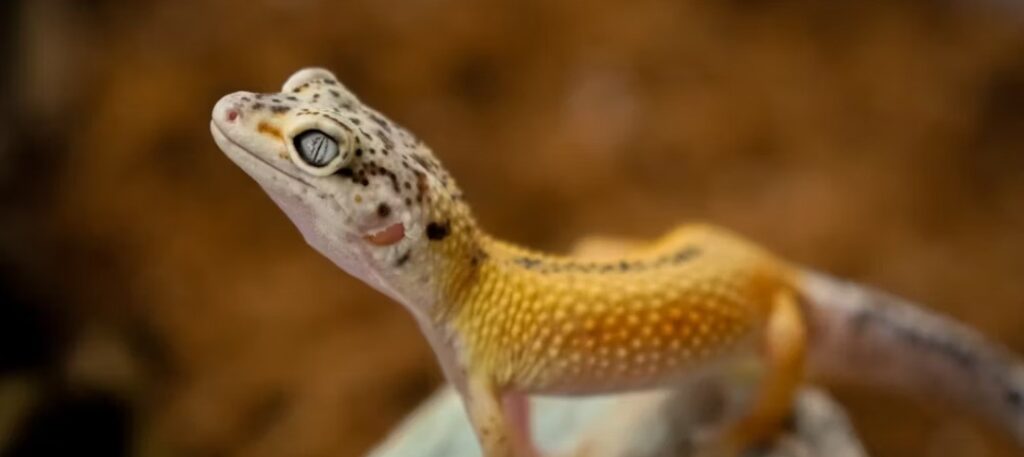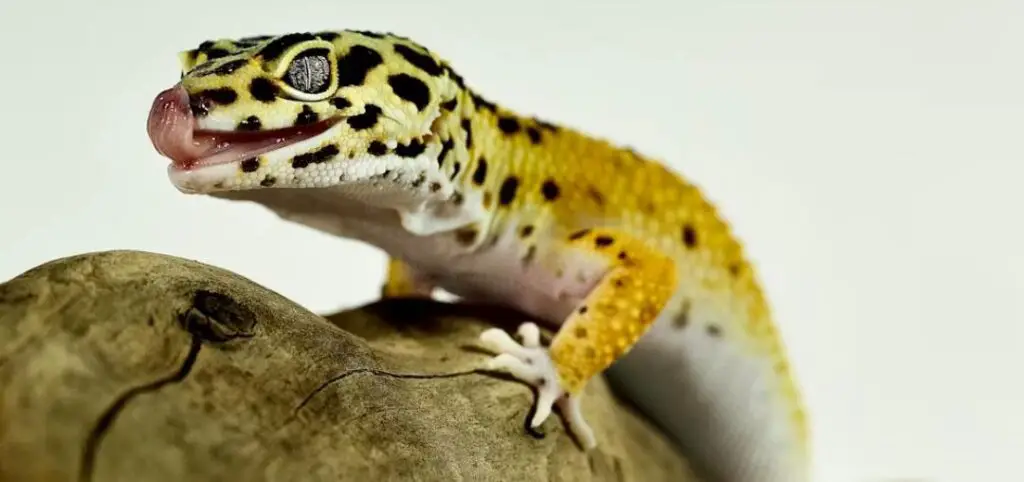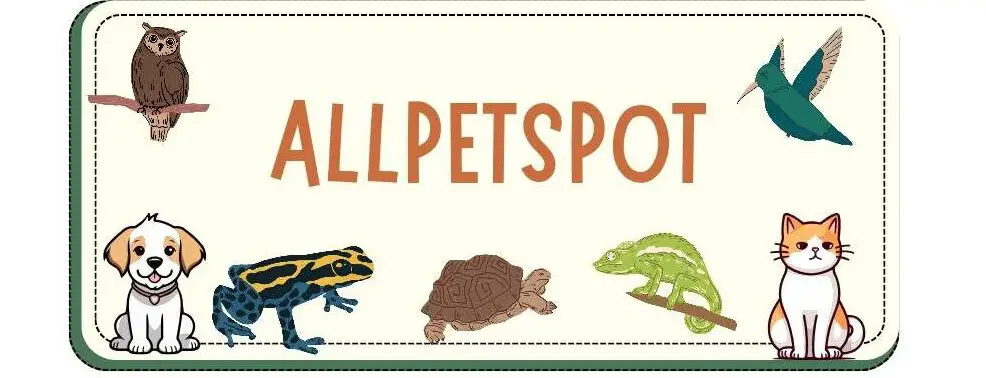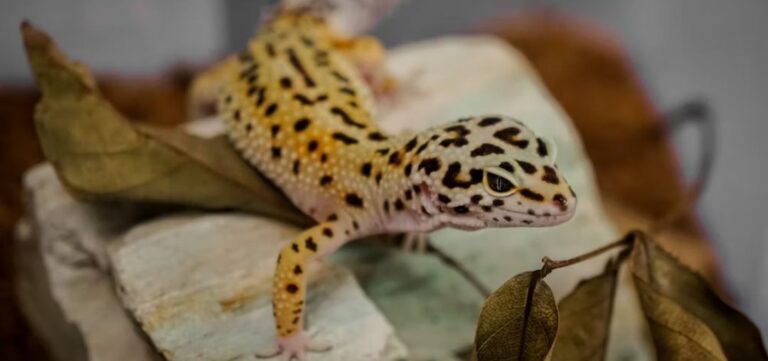Are you the proud owner of a leopard gecko? Well, today we’re going to dive into an important topic: recognizing the common leopard gecko dying signs…
Join me as we uncover the key indicators of a leopard gecko’s declining health and what steps we can take to ensure their well-being.
Let’s get started…
Leopard Gecko Dying Signs
Leopard geckos exhibit several signs that may indicate they are dying. These include a sudden loss of appetite and weight, lethargy or weakness, and unusual behavior such as hiding more frequently or being unresponsive to stimuli.
If you notice these signs in your leopard gecko, it is crucial to seek immediate veterinary care as they may indicate a serious underlying health issue that requires attention.
Let me break it down further for a better understanding…
Here are some of the most common leopard gecko dying signs you should know:
1. Extreme Weight Loss
If you notice that your leopard gecko has lost a significant amount of weight, it could be an indication of underlying health issues or death.
Rapid weight loss can stem from various causes, such as improper nutrition, parasitic infections, or digestive problems.
To help your gecko regain its health, it’s crucial to consult with a reptile veterinarian who can provide a proper diagnosis and guidance.
They may recommend dietary adjustments, including feeding a balanced diet of live insects and appropriate supplements.
Additionally, ensuring that the enclosure is at the right temperature and humidity levels is vital for your gecko’s overall well-being.
2. Extreme Lethargy

Leopard geckos are typically active and curious creatures.
If you notice that your gecko is excessively lethargic, rarely moving, or showing little interest in its surroundings, it could be a red flag.
Lethargy can be a sign of illness, stress, or inadequate environmental conditions.
Firstly, check the temperature gradient within the enclosure to ensure it falls within the appropriate range.
Geckos require a warm basking spot and cooler areas for thermoregulation.
If the temperature is not the issue, it’s recommended to consult a reptile veterinarian to assess your gecko’s health and discuss any potential underlying issues.
3. Lack of Droppings
Another concerning dying sign to watch out for in your leopard gecko is a lack of droppings.
Regular bowel movements are essential indicators of a healthy digestive system.
If your gecko hasn’t produced any droppings for an extended period, it may suggest an intestinal blockage, impaction, or other gastrointestinal problems.
In such cases, professional advice from a reptile veterinarian is crucial.
They can conduct a physical examination and recommend appropriate treatment options, which may include dietary changes, hydration assistance, or even medical interventions.
4. Sunken eyes
One of the first signs that something might be amiss with your leopard gecko is sunken eyes.
If you notice that your gecko’s eyes appear visibly sunken or recessed, it’s a cause for concern and the end could be near.
Sunken eyes can be an indication of dehydration, which can occur due to various reasons such as inadequate water intake, improper humidity levels, or an underlying health issue.
If you observe this sign, it’s crucial to take immediate action.
Make sure your gecko has access to fresh water at all times and ensure that the humidity in their enclosure is appropriate for their needs.
You can also try gently misting the enclosure to increase humidity levels. If the problem persists, it’s advisable to seek veterinary assistance.
A reptile veterinarian will be able to diagnose the underlying cause and recommend appropriate treatment.
5. Loss of appetite
Another worrisome dying sign in leopard geckos is a sudden or prolonged loss of appetite.
If your gecko stops eating or shows a significant decrease in food consumption, it could be an indication of an underlying health issue or stress.
Several factors can contribute to this, including improper temperatures, inadequate diet, or even a respiratory infection.
To address this concern, start by evaluating the temperature and lighting conditions in your gecko’s enclosure.
Ensure that the temperature gradient is appropriate, with a warm side around 88-92°F (31-33°C) and a cooler side around 75-80°F (24-27°C).
Additionally, review your gecko’s diet to ensure it is well-balanced and includes the necessary nutrients.
If the problem persists, or if you notice any other worrying symptoms, it’s essential to consult a reptile veterinarian for a proper diagnosis and treatment plan.
6. Difficulty moving
If your leopard gecko is having trouble moving, it’s a clear sign that something is wrong or nearing the end of life.
Difficulty moving can manifest as limping, dragging limbs, or even complete immobility.
This could be due to various reasons, such as metabolic bone disease, which is a common condition in reptiles resulting from a calcium or vitamin D deficiency.
If you notice this symptom, it’s crucial to take action promptly. Ensure that your gecko’s enclosure provides proper heat, lighting, and a varied diet to prevent nutritional deficiencies.
It’s also important to provide ample opportunities for exercise and climbing structures to support their physical health.
However, if the problem persists, it’s highly recommended to seek professional help from a reptile veterinarian who can provide a thorough examination and recommend appropriate treatment options.
7. Changes in skin color or texture
One of the first things you might notice if your leopard gecko is unwell is changes in its skin color or texture. Healthy leopard geckos usually have vibrant, even-toned skin.
However, if you observe patches of discoloration, such as dark or pale spots, it could be a sign of an underlying health issue or death.
Additionally, dry or flaky skin can also indicate a problem. If you notice these changes, it’s crucial to take action promptly.
Ensure that the humidity levels in your gecko’s enclosure are within the appropriate range.
Leopard geckos require a specific level of humidity to maintain healthy skin.
Make sure your gecko has access to clean water at all times. Dehydration can cause skin problems in leopard geckos.
Consider consulting a veterinarian who specializes in reptiles. They can provide a thorough examination and diagnose any potential health issues.
8. Abnormal breathing patterns
Another sign of a sick or dying leopard gecko is abnormal breathing patterns. Typically, leopard geckos have steady and regular breathing.
However, if you observe your gecko gasping for breath, wheezing, or breathing irregularly, it could be an indication of respiratory distress or nearing the end of life.
Ensure that the temperature and humidity levels in the gecko’s enclosure are appropriate.
Incorrect environmental conditions can lead to respiratory problems
Keep the enclosure clean and free of any irritants that could affect the gecko’s respiratory system.
Seek immediate veterinary attention. Respiratory issues can quickly escalate and become life-threatening if not addressed promptly.
9. Lack of activity and excessive hiding
Leopard geckos are typically active creatures that enjoy exploring their environment.
If you notice a significant decrease in your gecko’s activity level, such as lethargy or a lack of interest in its surroundings, it could be a sign of illness or nearing the end of life.
Excessive hiding, where the gecko spends most of its time in hiding spots and rarely comes out, can also indicate a problem.
Check the temperature gradient in the enclosure. Leopard geckos require a warm side and a cooler side to regulate their body temperature.
Incorrect temperatures can cause them to become sluggish and less active.
Ensure that your gecko’s diet is suitable and varied. Nutritional deficiencies can impact their energy levels and overall health.
Schedule a visit to the veterinarian to rule out any underlying health issues. A professional examination can help identify the cause of the gecko’s lack of activity.
Read more about identifying a sick leopard gecko.
How to Comfort and Help a Dying Leopard Gecko

When faced with the difficult situation of a dying leopard gecko, it is important to approach it with compassion and empathy.
Here are some steps to comfort and help your dying leopard gecko:
1. Create a comfortable and quiet environment: Provide a warm and quiet space for your gecko, away from loud noises and disruptions.
2. Maintain proper temperature and humidity levels: Ensure that the enclosure is at the optimal temperature and humidity to make your gecko as comfortable as possible.
3. Offer gentle hydration: Using a small dropper or syringe, offer water to your gecko by gently placing droplets near its mouth. Be careful not to force or stress the gecko.
4. Provide nutritional support: If your gecko is still able to eat, offer soft and easily digestible foods such as mashed fruits or baby food. Monitor its intake and adjust as necessary.
5. Keep the gecko clean: Gently clean any waste or dirt from your gecko’s body to prevent discomfort or infection.
6. Offer physical support: If your gecko is weak or struggling to move, create soft bedding or cushioning to support its body and make it more comfortable.
7. Monitor for signs of distress: Pay close attention to your gecko’s behavior, breathing, and overall condition. If it appears to be in pain or distress, consult a veterinarian for further guidance and support.
8. Provide emotional support: Be present with your gecko, offering gentle touch and soothing words. Your presence and comfort can provide solace during this difficult time.
Remember, the priority is to make your gecko as comfortable as possible during its final moments.
Consult with a veterinarian for professional advice and assistance, as they can provide specific guidance based on your gecko’s individual needs.
Conclusion
In conclusion, keeping a close eye on your leopard gecko’s health is crucial for their well-being. By familiarizing yourself with the signs of a declining gecko and taking prompt action, you can help ensure their survival and happiness. Remember, a little bit of vigilance can go a long way in safeguarding your beloved gecko companion.
Frequently Asked Questions
How can I tell if my leopard gecko is dying?
There are a few signs to look out for. Some common indications include loss of appetite, weight loss, lethargy, sunken or closed eyes, difficulty breathing, and a lack of response to stimuli. If you notice any of these symptoms, it’s important to seek veterinary assistance promptly.
My leopard gecko has stopped eating. Does it mean it’s dying?
While a loss of appetite can be a concerning sign, it doesn’t necessarily mean your leopard gecko is dying. There could be various reasons for the sudden change in eating habits, such as stress, illness, or environmental issues. However, if the loss of appetite persists for an extended period or is accompanied by other concerning symptoms, it’s best to consult a reptile veterinarian.
Is weight loss always a sign of a dying leopard gecko?
Weight loss in a leopard gecko can be an alarming sign but not always an indicator of imminent death. It can be caused by factors like improper diet, parasites, or an underlying health condition. It’s important to monitor your gecko’s weight regularly and consult a reptile veterinarian if you notice a significant and persistent decrease.
What should I do if my leopard gecko appears lethargic?
Lethargy, or a lack of energy and activity, can be a sign that something is wrong with your leopard gecko. Ensure that the temperature and humidity levels in its enclosure are appropriate, offer fresh water, and monitor its behavior closely. If the lethargy persists or is accompanied by other concerning symptoms, it’s best to seek professional veterinary care.
Are closed or sunken eyes a sign of imminent death in leopard geckos?
Closed or sunken eyes in a leopard gecko can indicate dehydration, illness, or an underlying issue. While it can be a cause for concern, it doesn’t necessarily mean that your gecko is on the verge of death. Try offering fresh water and check the humidity levels in the enclosure. If the condition worsens or is accompanied by other distressing signs, consult a reptile veterinarian.
My leopard gecko is having difficulty breathing. Is it dying?
Difficulty breathing is a serious symptom that requires immediate attention. It can be caused by respiratory infections, impaction, or other underlying health issues. Contact a reptile veterinarian immediately to assess the situation and provide appropriate treatment. Prompt veterinary care can often make a significant difference in the outcome for your leopard gecko.




